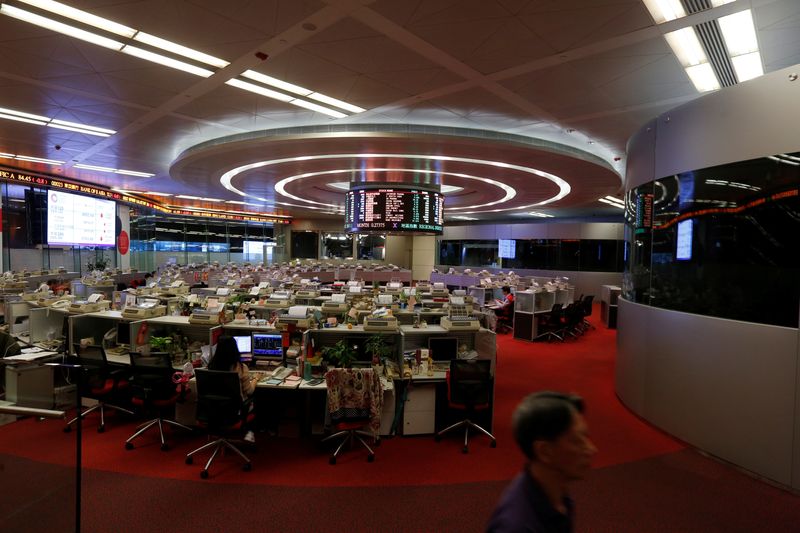By Jamie McGeever
(Reuters) - A look at the day ahead in Asian markets.
The first definition that appears in an online search for the meaning of "resilience" is "the capacity to withstand or to recover quickly from difficulties; toughness."
In global markets right now, one word probably suffices: "Nasdaq" or "Nvidia (NASDAQ:NVDA)."
Shares in the world's AI and chip darling roared back 6.8% on Tuesday for their best day in a month, enough to recover the previous day's slump, narrow the recent correction, and set the tone for a tech-led rise in U.S. and global equities.
There was no fresh news or impetus behind the move, which probably has as much to do with investors' book-squaring and position adjustments as the end of the quarter and half-year point draws into view as any thing else.
In that light, the direction Asian markets are liable to take on Wednesday is hard to call. Will Tuesday's tech and mega cap rebound spark a flurry of buying, or will investors still be minded to limit risk exposure ahead of quarter-end on Friday?
There doesn't appear much from Tuesday's U.S. session, other than tech's bounce, to give a signal either way - the dollar rose a bit, Treasury yields were flat, and the tone from remarks by two Fed governors probably leaned on the hawkish side.
Broader concerns about the weakness of the yen and potential intervention from Japanese authorities, and the Chinese yuan's steady depreciation, still hang heavily over Asian markets. The lack of fresh news or developments on either front is unlikely to change that going into Wednesday.
The regional economic data calendar is extremely light on Wednesday, with only Australian inflation and manufacturing data from Singapore set for release.
Reserve Bank of Australia assistant governor Christopher Kent is scheduled to speak, while Thailand's central bank releases the minutes of its June 12 policy meeting, and later hosts an analyst meeting on the economy and monetary policy.
Inflation in Australia is proving to be much stickier than previously envisaged. This explains why rates traders reckon the RBA will be the most hawkish G10 central banks this year apart from the Bank of Japan, and are only pricing in a one-in-four chance of any rate cut this year.
The Aussie dollar is reacting accordingly - it is the second best performing G10 currency against the U.S. dollar this year behind sterling.
Economists polled by Reuters expect the annual rate of weighted consumer inflation in May accelerated to 3.8% from 3.6% in April. That would be the highest this year and the second consecutive rise - not the RBA's preferred direction of travel.
Here are key developments that could provide more direction to markets on Wednesday:
- Australia inflation (May)

- RBA assistant governor Kent speaks
- Singapore manufacturing production (May)